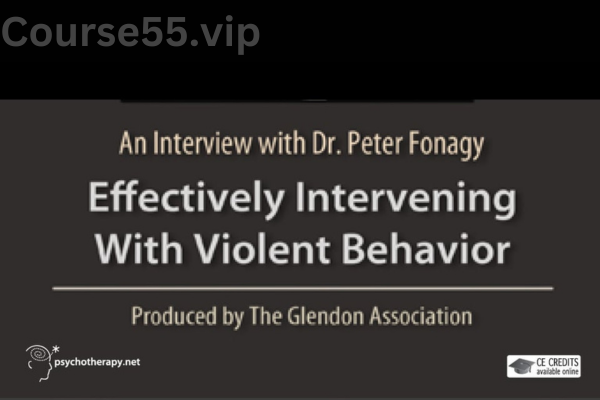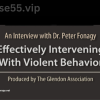-
×
 Ethics & Cultural Competency: 1-Day Intensive Certificate By Frances Patterson - PESI
1 × $23.10
Ethics & Cultural Competency: 1-Day Intensive Certificate By Frances Patterson - PESI
1 × $23.10 -
×
 PTSD in Veterans: Impact of PTSD on Military Personnel and War Veterans and Their Families By Michael Gatson - PESI
1 × $23.10
PTSD in Veterans: Impact of PTSD on Military Personnel and War Veterans and Their Families By Michael Gatson - PESI
1 × $23.10 -
×
 Utah Legal and Ethical Issues for Mental Health Clinicians By Susan Lewis - PESI
1 × $23.10
Utah Legal and Ethical Issues for Mental Health Clinicians By Susan Lewis - PESI
1 × $23.10 -
×
 Advances in Motor Control and Learning for Neurological Rehab By Ben Sidaway - PESI
1 × $23.10
Advances in Motor Control and Learning for Neurological Rehab By Ben Sidaway - PESI
1 × $23.10 -
×
 Fast Track 6 Figure Formula By Ray Higdon & Mark Hoverson
1 × $23.10
Fast Track 6 Figure Formula By Ray Higdon & Mark Hoverson
1 × $23.10 -
×
 Rewire the Anxious Brain: Neuroscience-Informed Treatment of Anxiety, Panic and Worry By Marwa Azab - PESI
1 × $23.10
Rewire the Anxious Brain: Neuroscience-Informed Treatment of Anxiety, Panic and Worry By Marwa Azab - PESI
1 × $23.10 -
×
 What to Do in the First 90 Days of Your New Job
1 × $23.10
What to Do in the First 90 Days of Your New Job
1 × $23.10 -
×
 Transgender & Gender Non-Binary (TGNB) Clients: Clinical Issues and Treatment Strategies By lore m dickey - PESI
1 × $23.10
Transgender & Gender Non-Binary (TGNB) Clients: Clinical Issues and Treatment Strategies By lore m dickey - PESI
1 × $23.10 -
×
 New Rules for Treating Trauma: Integrating Neuroscience for Resilience, Connection and Post-Traumatic Growth By Courtney Armstrong - PESI
1 × $23.10
New Rules for Treating Trauma: Integrating Neuroscience for Resilience, Connection and Post-Traumatic Growth By Courtney Armstrong - PESI
1 × $23.10 -
×
 Ultimate Guide Technical Trading
1 × $23.10
Ultimate Guide Technical Trading
1 × $23.10 -
×
 Attachment Focused Therapy: Trauma Related Disorders in Children & Adolescents By Daniel Hughes - PESI
1 × $23.10
Attachment Focused Therapy: Trauma Related Disorders in Children & Adolescents By Daniel Hughes - PESI
1 × $23.10 -
×
 The Complete Crowdfunding PR System By Salvador Briggman - CrowdCrux
1 × $23.10
The Complete Crowdfunding PR System By Salvador Briggman - CrowdCrux
1 × $23.10 -
×
 Profitable Online Course by Lewis Howes
1 × $15.40
Profitable Online Course by Lewis Howes
1 × $15.40 -
×
 Black Gold Strategies by Basecamptrading
1 × $23.10
Black Gold Strategies by Basecamptrading
1 × $23.10 -
×
 Writing Email Copy for B2B Companies By AWAI
1 × $23.10
Writing Email Copy for B2B Companies By AWAI
1 × $23.10 -
×
 Using EMDR Across the Lifespan By Robert Tinker - PESI
1 × $23.10
Using EMDR Across the Lifespan By Robert Tinker - PESI
1 × $23.10 -
×
 Acceptance and Commitment Therapy (ACT) Made Easy: Innovative Techniques for Depression, Anxiety, Trauma & Personality Disorders By Douglas Fogel - PESI
1 × $23.10
Acceptance and Commitment Therapy (ACT) Made Easy: Innovative Techniques for Depression, Anxiety, Trauma & Personality Disorders By Douglas Fogel - PESI
1 × $23.10
Effectively Intervening with Violent Behavior: An Interview with Peter Fonagy
$24.00 Original price was: $24.00.$7.70Current price is: $7.70.
SKU: C55vip.46251aVOe2p7i
Category: Download
Tags: An Interview with Peter Fonagy, Effectively Intervening with Violent Behavior, Peter Fonagy, Violent Behavior
Effectively intervening with violent behavior: An interview with Dr. Peter Fonagy – Digital Download!

Effectively Intervening with Violent Behavior: An Interview with Peter Fonagy
Overview

Navigating Violent Behavior: A Conversation with Dr. Peter Fonagy
Violence weaves a difficult thread through the intricate fabric of human behavior, shaped by psychological, emotional, and social elements. Learning how to intervene effectively in violent conduct is critical for those in psychology, criminal justice, and education fields. In this interview, Dr. Peter Fonagy, a leading voice in psychological science, explores this complex topic, offering a fusion of theoretical insights and real-world applications. His exploration into early childhood experiences, the process of mentalization, and comprehensive intervention strategies brings much-needed clarity to this challenging issue. This discussion acts as both an academic guide and a practical manual for professionals working in mental health and correctional environments.
Tracing the Origins of Violent Tendencies
How Early Attachment Shapes Behavior
Dr. Fonagy underscores the foundational role of early attachment patterns in influencing future violent tendencies. The emotional bonds developed during infancy and childhood set the stage for an individual’s ability to regulate emotions and engage socially as they mature. Secure attachments build emotional stability and predictability, while insecure attachments often nurture anxiety and aggressive behaviors.
Secure versus Insecure Attachment Styles:
-
Secure Attachment: Encourages emotional strength, positive self-regard, and healthier interpersonal dynamics.
-
Insecure Attachment: Associated with heightened aggression, poor emotional regulation, and strained relationships.
Drawing a parallel, strong attachments are like deep-rooted trees that stand firm through storms, whereas insecure attachments resemble shallow roots, leaving individuals vulnerable to emotional upheavals, often leading to destructive actions affecting both themselves and others.
Mentalization: A Critical Pathway to Behavioral Transformation
A pivotal idea presented by Dr. Fonagy is the importance of mentalization — the ability to perceive and interpret one’s own and others’ mental states. This reflective capacity is fundamental not just for preventing violence but also for fostering empathy and improving communication skills. Mentalization serves as a critical lens through which individuals can better navigate their emotional and social worlds.
Advantages of Strengthening Mentalization Skills:
-
Facilitates better control over emotions.
-
Cultivates empathy and deeper understanding.
-
Enhances conflict resolution and problem-solving skills.
Dr. Fonagy shares impactful examples where teaching individuals to mentalize has led to major behavioral shifts, comparing it to guiding someone out of darkness. By gaining insight into their own and others’ emotions, individuals are equipped to respond more constructively in potentially volatile situations.
Practical Approaches to Addressing Violent Conduct
Therapeutic Interventions on an Individual and Group Level
Dr. Fonagy highlights various therapy models that can be effective in curbing violent behavior. Individual therapy offers a confidential space for clients to delve into personal traumas and emotions, while group therapy leverages shared experiences to foster collective healing. Drawing from attachment theories and mentalization principles, therapists can customize their strategies to fit individual needs.
Key Elements in Individual Therapy:
-
Investigating early attachment experiences.
-
Implementing cognitive-behavioral techniques to reframe thinking.
-
Building skills for emotional articulation and regulation.
Group Therapy Practices:
-
Encouraging the sharing of personal stories for empathy building.
-
Role-playing exercises to practice handling conflicts.
-
Conducting group mentalization exercises to enhance understanding among peers.
Both formats serve as critical channels for emotional growth and community-building, much like tending a dry garden until it blooms with new life.
Tackling Violence Within Correctional Facilities
Working within prison systems presents distinctive hurdles, but Dr. Fonagy stresses that meaningful interventions are both possible and imperative. Introducing mentalization-centered programs in prisons can markedly diminish violent incidents and foster healthier inmate relationships.
A broader perspective calls for addressing systemic issues such as poverty, trauma, and resource scarcity — acknowledging the interconnectedness of these factors is essential. Dr. Fonagy’s approach shows that even in places often deemed irredeemable, meaningful transformations can begin to take root.
Social Influences and Risk Elements in Violent Behavior
Environmental Contributions to Violence
Dr. Fonagy brings attention to how environmental contexts heavily influence the emergence of violent behavior. Communities marred by violence, neglect, or insufficient resources often create fertile ground for aggression to thrive.
Environmental Drivers:
-
Community violence exposure.
-
Weak or absent supportive relationships.
-
Economic hardship and limited opportunity.
Just as plants struggle in neglected gardens choked by weeds, individuals in toxic environments find it challenging to develop healthy behaviors. Enhancing community support systems can foster resilience and reduce violence at the societal level.
Recognizing Key Risk Factors
Beyond environmental influences, pinpointing risk factors is vital for proactive interventions. Dr. Fonagy outlines several key risks that practitioners should monitor closely:
-
Historical Trauma: Previous exposure to violence can reinforce aggressive cycles.
-
Mental Health Disorders: Untreated psychological conditions raise the likelihood of violent actions.
-
Substance Misuse: A well-established link exists between drug or alcohol abuse and violent behaviors.
By systematically identifying and addressing these vulnerabilities, professionals can intervene before violence escalates, much like trimming away dead branches to promote healthier growth.
Final Reflections
Dr. Peter Fonagy’s perspectives on mitigating violent behavior offer an invaluable resource for practitioners and community leaders alike. By integrating attachment theories, mentalization techniques, and holistic intervention strategies, pathways toward positive change become attainable.
The dialogue surrounding violence doesn’t have to be one of hopelessness. With empathy, deep understanding, and strategic action, there is room to foster healing and growth — ultimately benefitting not just individuals, but society at large.
Frequently Asked Questions:
Business Model Innovation: We operate a group buying strategy, allowing participants to share costs and access popular courses at reduced prices. This model benefits individuals with limited financial resources, despite concerns from content creators about distribution methods.
Legal Considerations: The legality of our operations involves complex issues. Although we don’t have explicit permission from course creators to resell their content, there are no specific resale restrictions stated at the time of purchase. This ambiguity creates an opportunity for us to provide affordable educational resources.
Quality Control: We ensure that all course materials purchased are identical to those offered directly by the creators. However, it’s important to understand that we are not official providers. As such, our offerings do not include:
– Live coaching calls or sessions with the course author.
– Access to exclusive author-controlled groups or portals.
– Membership in private forums.
– Direct email support from the author or their team.
We aim to reduce the cost barrier in education by offering these courses independently, without the premium services available through official channels. We appreciate your understanding of our unique approach.
Be the first to review “Effectively Intervening with Violent Behavior: An Interview with Peter Fonagy” Cancel reply
You must be logged in to post a review.







Reviews
There are no reviews yet.